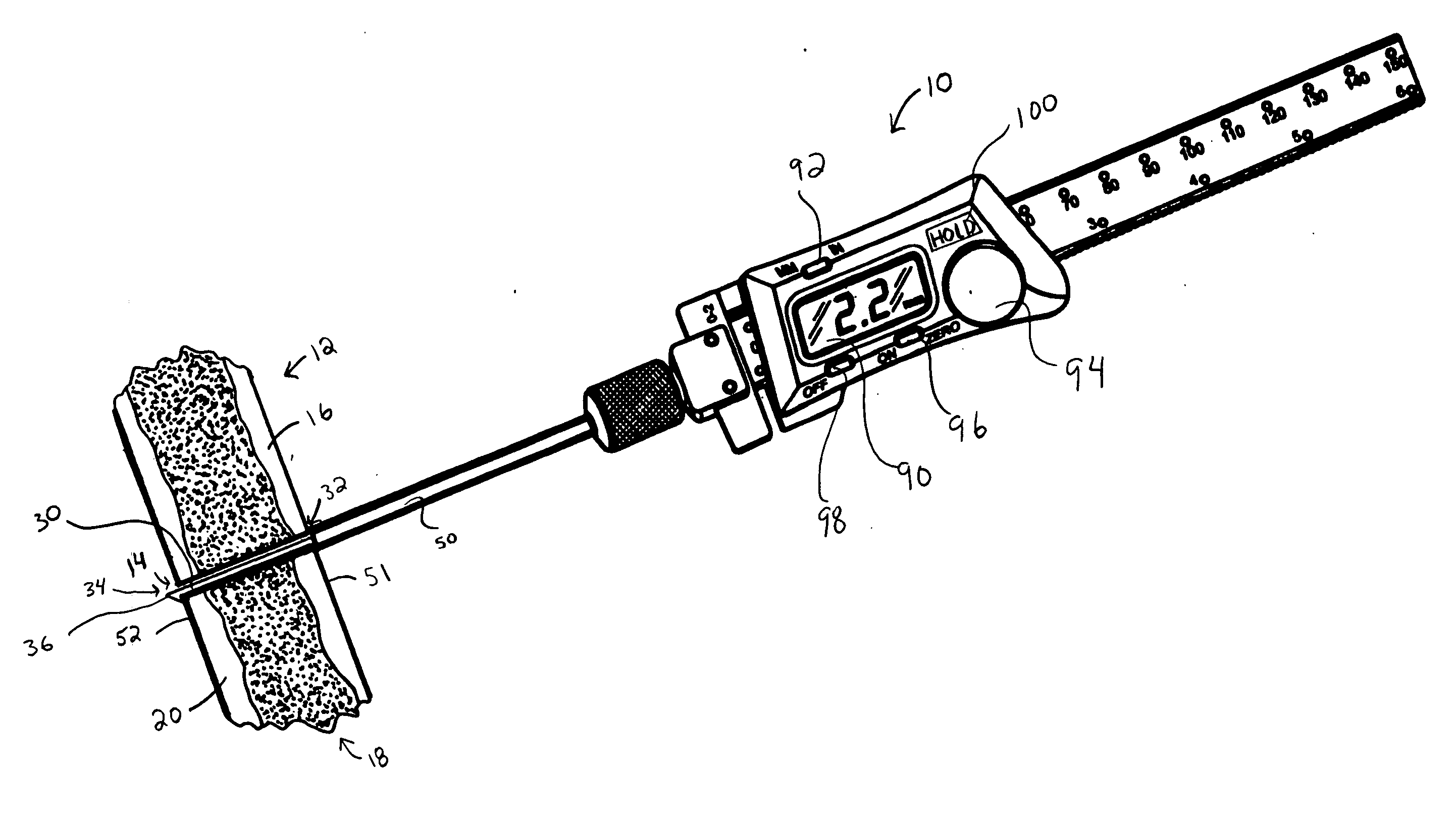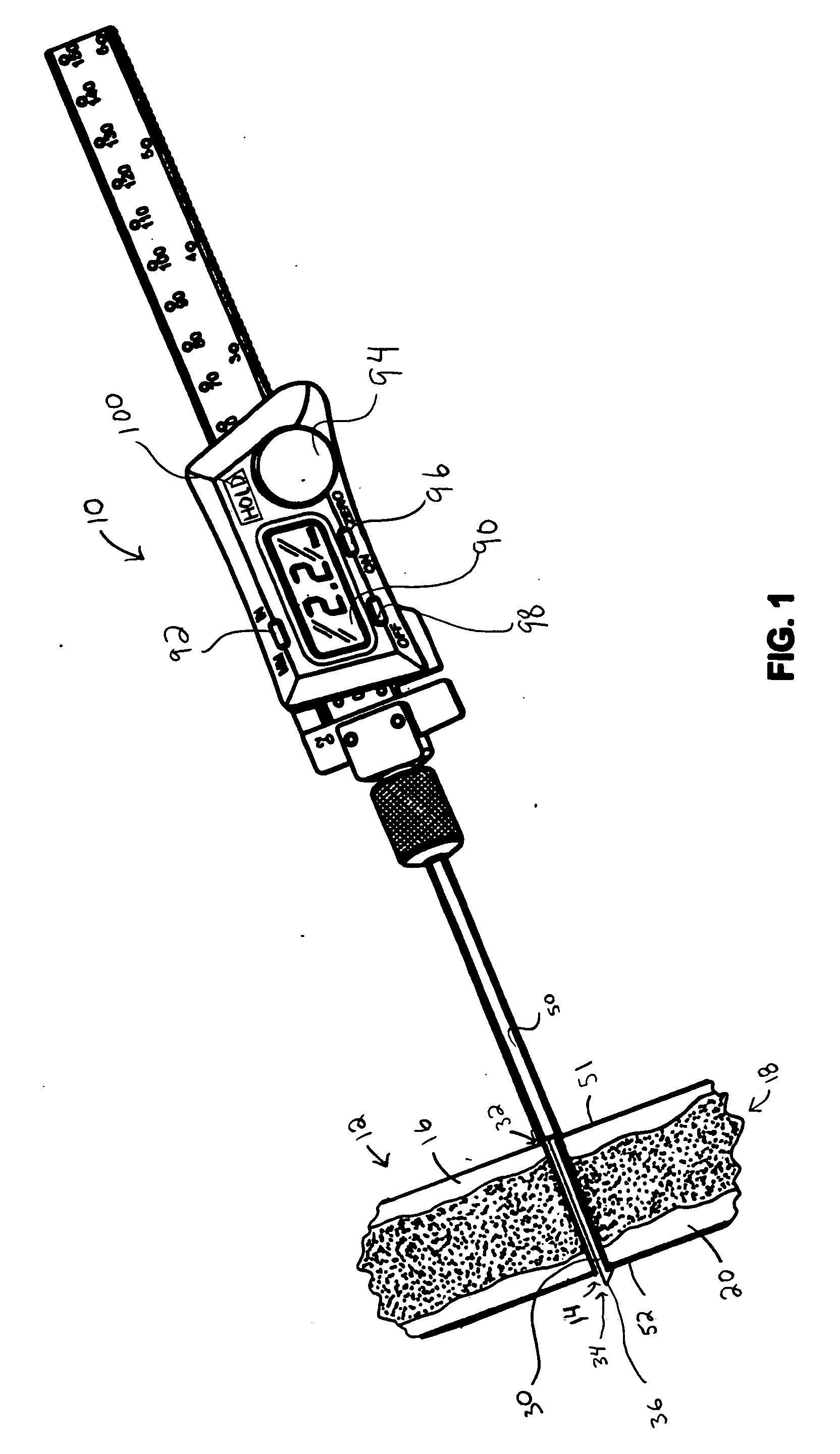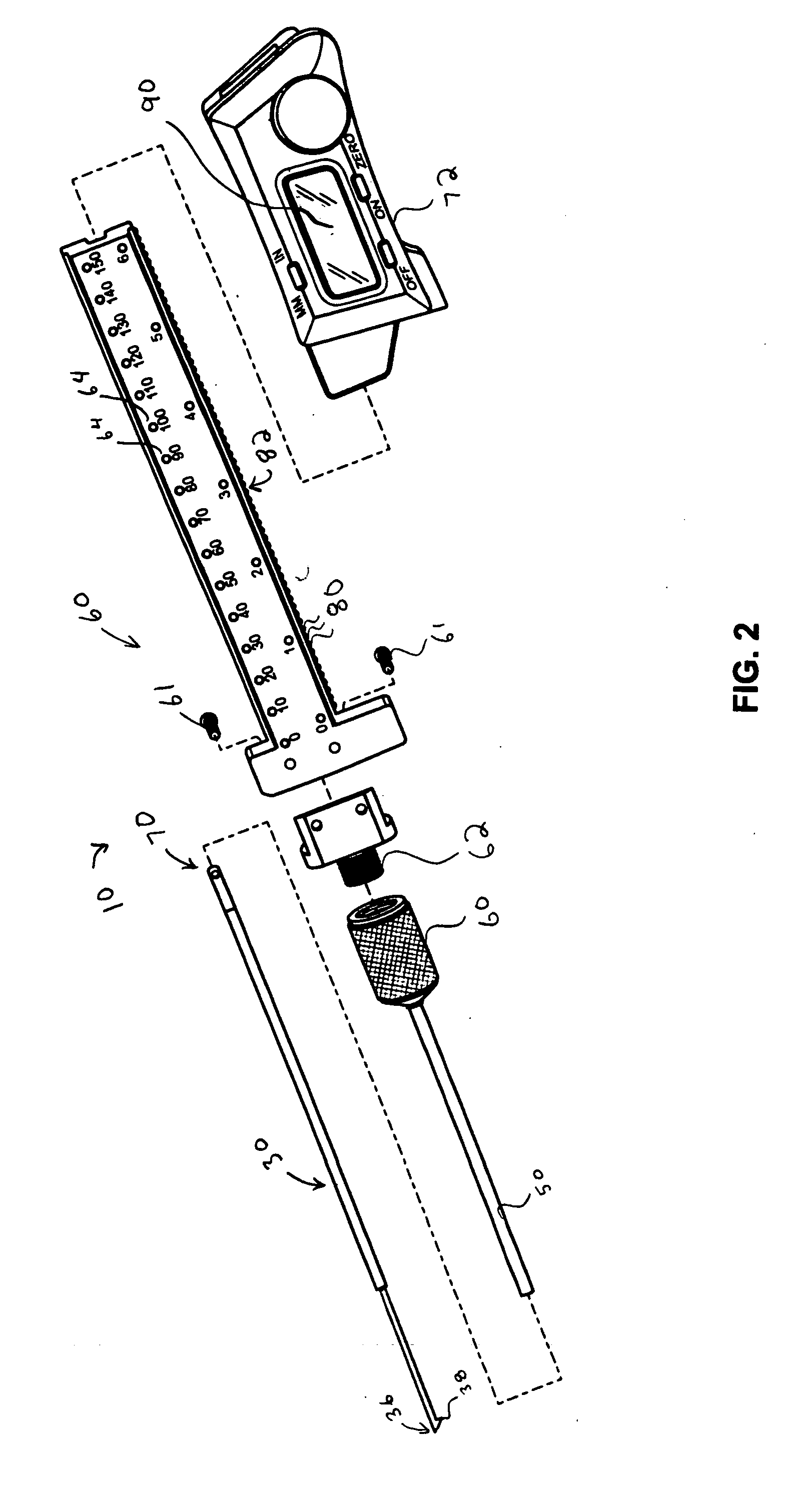Surgical depth instrument
a technology of depth gauge and surgical device, which is applied in the field of instruments, can solve problems such as paralysis, damage to the fat layer of the finger, and difficulty in adjusting the depth gauge, and achieve the effects of improving accuracy, reducing pain, and improving accuracy
- Summary
- Abstract
- Description
- Claims
- Application Information
AI Technical Summary
Problems solved by technology
Method used
Image
Examples
Embodiment Construction
[0016] Referring initially to FIG. 1, a depth instrument 10 is depicted secured with a bone portion 12 in order to measure the depth of a passageway in the form of a bore or hole 14 formed therein for receiving a fastener such as a screw (not shown). As can be seen, the bone portion 12 is bi-cortical. That is, the bone portion 12 has a first, proximal cortical layer 16, a cancellous layer 18, and a second, distal cortical layer 20. However, it should be noted that the instrument 10 is suitable for use with bone portions having other structures, such as those including solid cortical bone.
[0017] As described above, the hole 14 may be a pilot hole formed in the bone portion 14. In using the instrument 10 to measure the distance from a proximal surface 51 formed on the proximal cortical layer 16 to a distal surface 52 formed on the distal cortical layer 20, the instrument 10 operates such that the relative movement between two portions respectively abutting the proximal surface 51 and...
PUM
 Login to View More
Login to View More Abstract
Description
Claims
Application Information
 Login to View More
Login to View More - R&D
- Intellectual Property
- Life Sciences
- Materials
- Tech Scout
- Unparalleled Data Quality
- Higher Quality Content
- 60% Fewer Hallucinations
Browse by: Latest US Patents, China's latest patents, Technical Efficacy Thesaurus, Application Domain, Technology Topic, Popular Technical Reports.
© 2025 PatSnap. All rights reserved.Legal|Privacy policy|Modern Slavery Act Transparency Statement|Sitemap|About US| Contact US: help@patsnap.com



